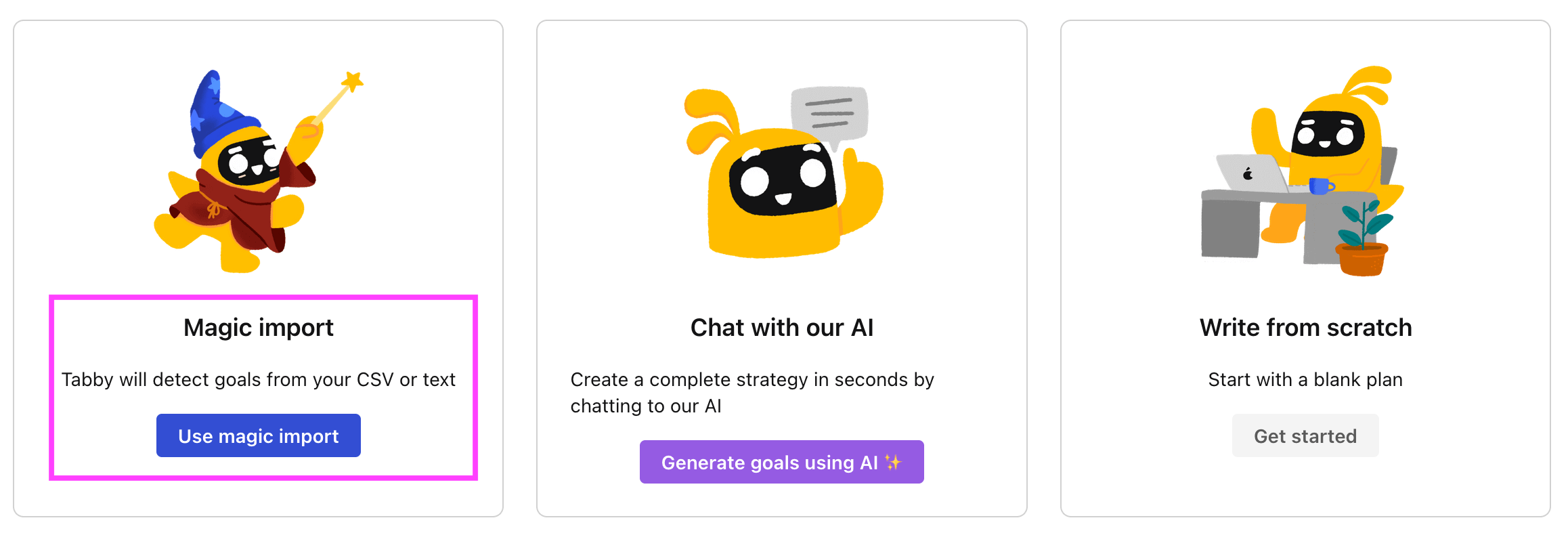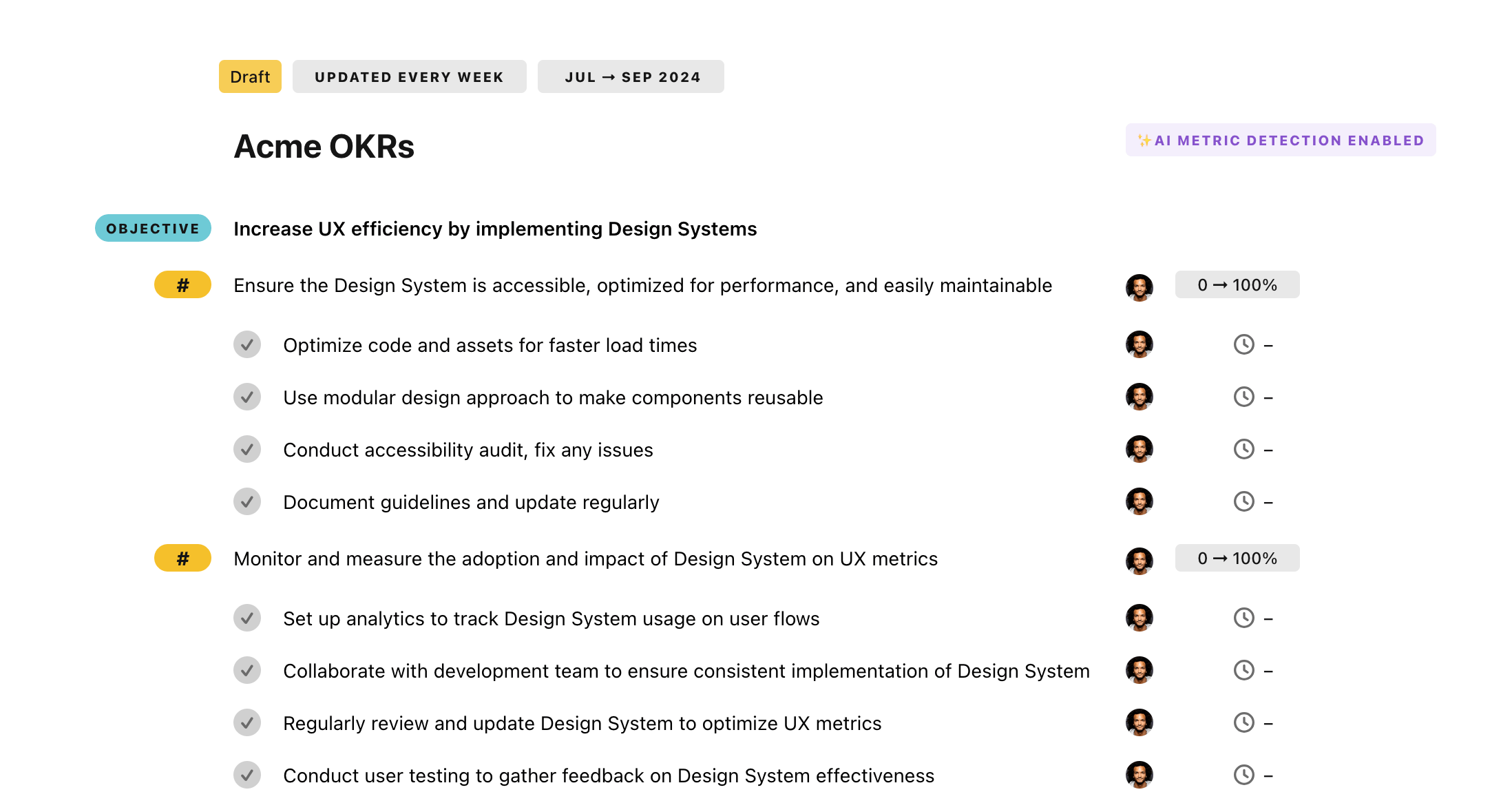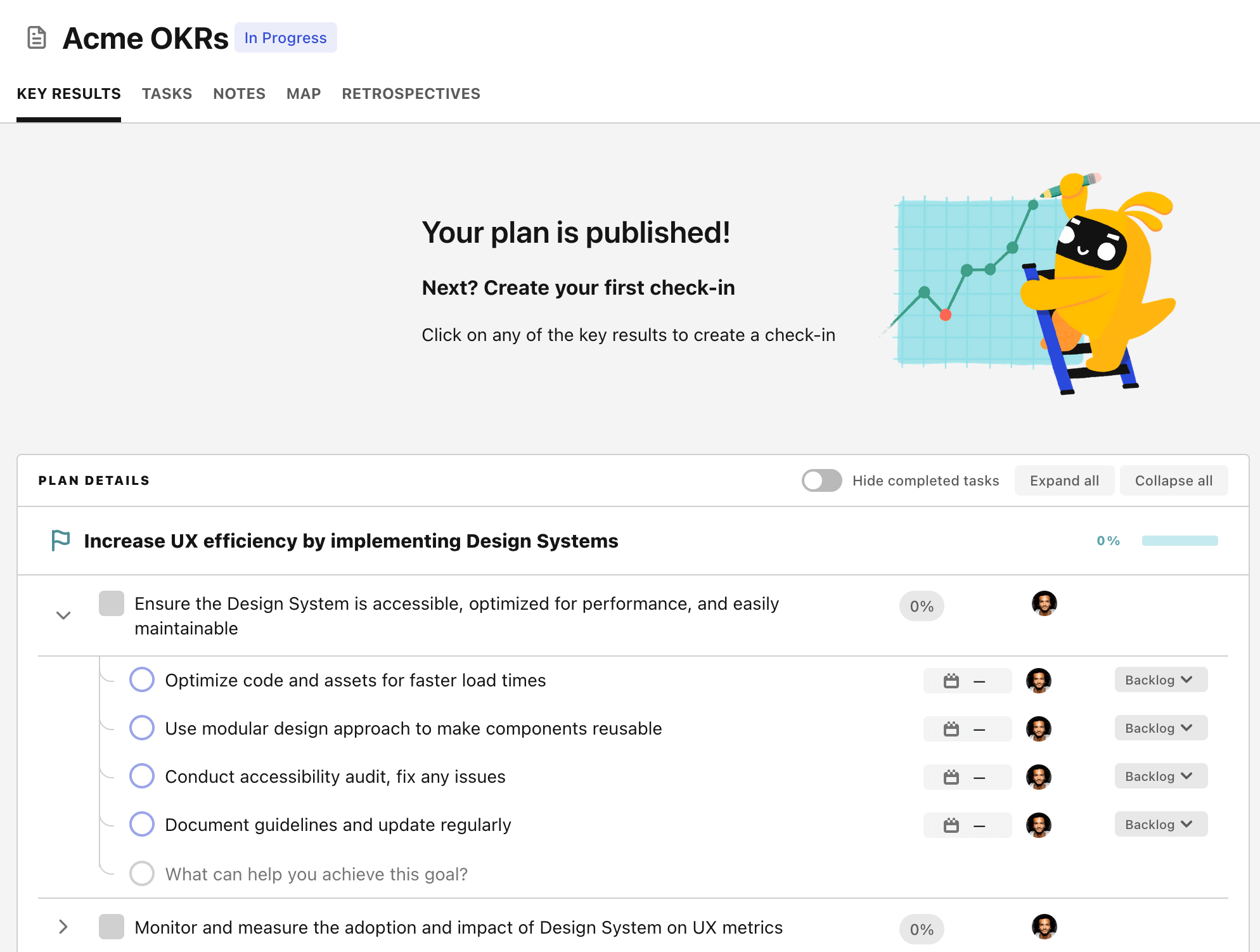OKR template to enhance our ecommerce channel to be the primary revenue source
Your OKR template
Next, the company aims to improve the ecommerce conversion rate by 10%. This will be done by enhancing the product descriptions and images and implementing targeted email marketing campaigns. The company also plans to revamp the website for better user interface (UX/UI) and faster load times to help improve conversion rates.
The third objective is to increase average monthly ecommerce sales by 20%. To achieve this, the company plans to add new, competitive products to its inventory and optimize the website for better visibility in search engine results. Implementing a targeted email marketing campaign is also part of this objective.
In summary, the OKR floats strategies to enhance the ecommerce channel and make it the primary revenue source. This involves a reduction of churn rate, improvement of conversion rate, and an increase in average monthly ecommerce sales, all by leveraging website optimization, customer loyalty programs, targeted email campaigns, and improved product description.
ObjectiveEnhance our ecommerce channel to be the primary revenue source
KRReduce ecommerce customer churn rate by 15%
Optimize user experience on the website
Introduce a customer loyalty program
Implement personalized customer retention email campaigns
KRImprove ecommerce conversion rate by 10%
Enhance product descriptions and images
Implement targeted email marketing campaigns
Revamp website for better UX/UI and faster load times
KRIncrease average monthly ecommerce sales by 20%
Add new, competitive products to inventory
Optimize website for better search engine visibility
Implement a targeted email marketing campaign
How to edit and track OKRs with Tability
You'll probably want to edit the examples in this post, and Tability is the perfect tool for it.
Tability is an AI-powered platform that helps teams set better goals, monitor execution, and get help to achieve their objectives faster.
With Tability you can:
- Use AI to draft a complete set of OKRs in seconds
- Connect your OKRs and team goals to your project
- Automate reporting with integrations and built-in dashboard
Instead of having to copy the content of the OKR examples in a doc or spreadsheet, you can use Tability’s magic importer to start using any of the examples in this page.
The import process can be done in seconds, allowing you to edit OKRs directly in a platform that knows how to manage and track goals.
Step 1. Sign up for a free Tability account
Go tohttps://tability.app/signup and create your account (it's free!)
Step 2. Create a plan
Follow the steps after your onboarding to create your first plan, you should get to a page that looks like the picture below.

Step 3. Use the magic importer
Click on Use magic import to open up the Magic Import modal.
Now, go back to the OKR examples, and click on Copy on the example that you’d like to use.

Paste the content in the text import section. Don’t worry about the formatting, Tability’s AI will be able to parse it!

Now, just click on Import from text and let the magic happen.

Once your example is in the plan editor, you will be able to:
- Edit the objectives, key results, and tasks
- Click on the target 0 → 100% to set better target
- Use the tips and the AI to refine your goals
Step 4. Publish your plan
Once you’re done editing, you can publish your plan to switch to the goal-tracking mode.

From there you will have access to all the features that will help you and your team save hours with OKR reporting.
- 10+ built-in dashboards to visualise progress on your goals
- Weekly reminders, data connectors, and smart notifications
- 9 views to map OKRs to strategic projects
- Strategy map to align teams at scale